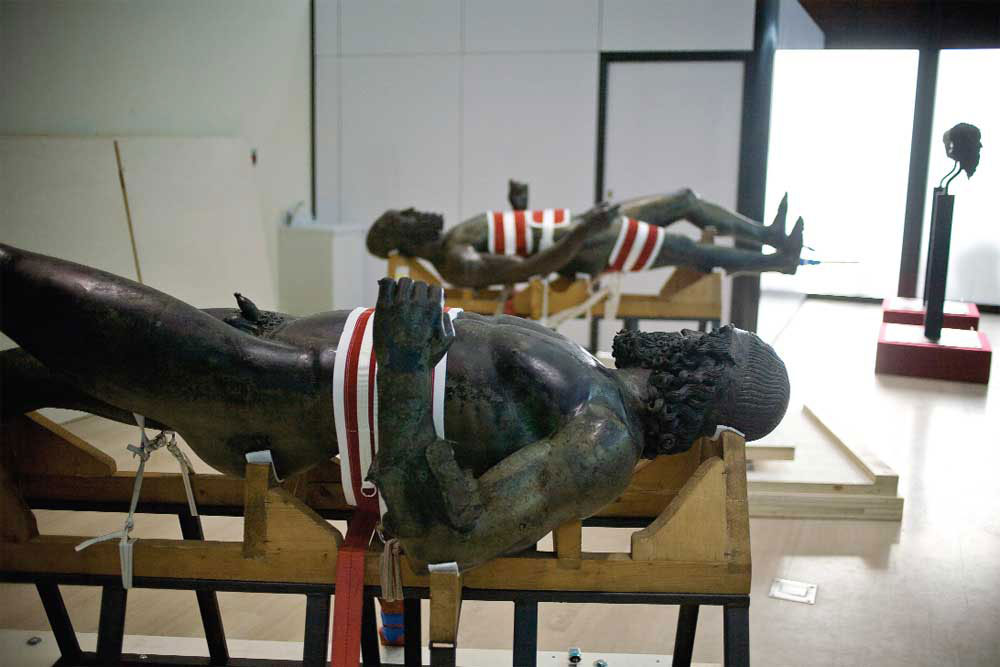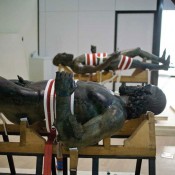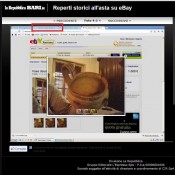When two large bronze sculptures dating back to the fifth century BC were hauled out of the sea just off the coast of Calabria almost 40 years ago, the Italian authorities and international academics were quick to recognise it as one of the most important archeological discoveries of the century. Yet today these extraordinary finds are languishing on stretchers in a regional government office in Reggio Calabria and it is unclear when they will be put back on display.
The sculptures, known as the Riace Bronzes after the nearest town on the coast to their findspot, are one of the few surviving examples of bronzes made by the master sculptors of ancient Greece (most sculptures of this age were melted down and the bronze re-used). After they were found by divers, they were taken to Florence’s Opificio delle Pietre Dure to be restored. They were exhibited in 1980 at the Museo Archeologico Nazionale in Florence, where they were seen by 1.3 million people. They then travelled through Italy, via Rome, back to Calabria for display in Reggio Calabria’s archaeology museum, which claimed the works as its own. They remained there until 2009, when the museum was closed for renovation, and were transferred to the council offices.
The extensive renovation of the museum was to be completed by March 2011, in time for the 150th anniversary of Italian unification. But the cost of the project, which was initially estimated at €11m, has ballooned to over €30m and rising, with local commentators complaining of financial mismanagement, incompetence and corruption.
The last time the bronzes were seen in public was in 2008. The rest of the museum’s archeological treasures, many of which have never been displayed, remain in store.
In August, leading Italian academics suggested moving the bronzes back to Florence, where they could be put on display: a move supported by Florence’s mayor Matteo Renzi. But in 2009, the public staged protests at the prospect of the bronzes leaving Reggio Calabria and were equally opposed to copies being made and sent in their place. Meanwhile, the Calabrian authorities are still touting the bronzes as the region’s most significant cultural symbol and tourist attraction—though they are not on show—and even used them in a series of animated adverts for the region’s tourism in 2011.
Infighting
Reggio Calabria’s Museo Archeologico Nazionale has been mired in controversy since renovation work began in 2008. This include external structural renovations and interior remodelling and decoration. With an initial budget of around €11m, work ground to a halt just over a year ago after €23m in total had been spent on the project. The region has managed to find an extra €6m from central government, and says an additional €5m could come from European funds.
The biggest problem appears to be the refurbishment of the museum’s interiors, which has been the subject of disagreements between the Soprintendenza, the regional arm of the ministry of culture that runs the museum, and the project consultants.
Felice Costabile, a celebrated academic from Reggio Calabria who was appointed by the ministry of culture as the chief consultant on the project, says visitors will be frustrated by the proposed exhibition route, which will force them to start from the third floor and work their way down to the main exhibition halls on the ground floor. He adds that there are only two lifts available to take visitors to the third floor, each of which can only hold nine people.
His plan to use the internal courtyard to display monumental pieces of Greek and Roman architecture has also been thwarted by the officials’ decision to use the space as a bookshop.
But Simonetta Bonomi, the superintendent of Calabria’s cultural heritage, is adamant that the new visitor route is the best option. Meanwhile, Giuseppe Scopelliti, the president of the region of Calabria, says he believes the museum will reopen in December, but with an estimated shortfall of at least €5m. The likelihood of this happening has been met with widespread scepticism.




